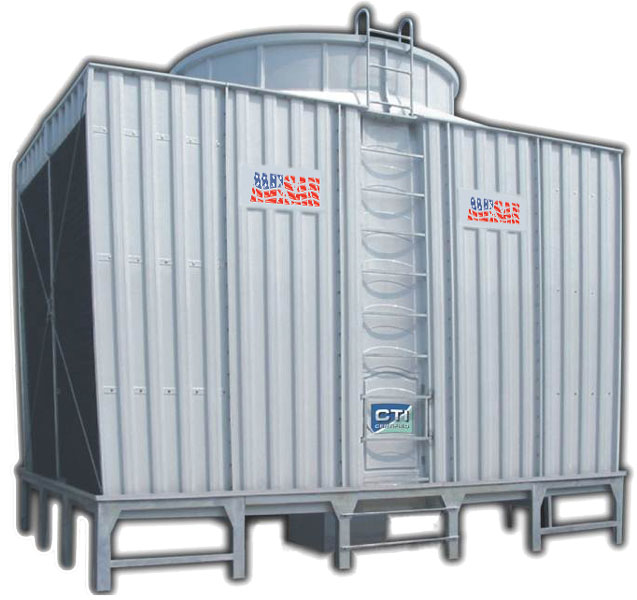
Get what you pay for, insist on performance guaranteed as per CTI STD-201, the only third-party performance assurance program in the industry. Safeguard your investment.
CTI certification provides building owners, designers and installers, assurance of thermal performance, a guarantee that the cooling tower will perform as expected.
CTI or Cooling Technology Institute is an independent,  non-profit association of manufacturers, designers, operators and owners of cooling towers. Among its objectives are the advancement of design, technology, and performance of cooling towers, and the conservation of water as a precious natural resource. CTI developed the CTI-STD-201 standard or “Certification Standard for Commercial Water-Cooling Towers”. STD-201 standard certifies that all models, in a line of cooling towers offered by a manufacturer, will perform in accordance with the manufacturer’s published ratings. Basically, it validates the information in the manufacturer catalogs, and provides the customer, assurance that the cooling tower will perform as represented in the catalogs. CTI is dedicated to promote the truthful rating of cooling towers capability. Having CTI certification in advance, eliminates the need for costly onsite field tests, and ensures system performance to meet the design objectives
non-profit association of manufacturers, designers, operators and owners of cooling towers. Among its objectives are the advancement of design, technology, and performance of cooling towers, and the conservation of water as a precious natural resource. CTI developed the CTI-STD-201 standard or “Certification Standard for Commercial Water-Cooling Towers”. STD-201 standard certifies that all models, in a line of cooling towers offered by a manufacturer, will perform in accordance with the manufacturer’s published ratings. Basically, it validates the information in the manufacturer catalogs, and provides the customer, assurance that the cooling tower will perform as represented in the catalogs. CTI is dedicated to promote the truthful rating of cooling towers capability. Having CTI certification in advance, eliminates the need for costly onsite field tests, and ensures system performance to meet the design objectives
Deficiencies in cooling tower performance are very difficult to detect in the field, and although undetected, their influence in the building’s energy consumption, is considerable. A higher-than-design condensing water temperature makes the chillers consume more energy, thus increasing the operating costs. The higher the condensing water temperature, the higher the compressor’s head pressure, and a compressor working against a higher head pressure, uses more electricity. A chiller served by a cooling tower that is just 90% under-performing, has to operate for an additional 20% of the time it would operate if served by a 100% capable tower
CTI certification has no additional cost to the building owner; actually, it reduces the first cost by eliminating costly over-sizing of non-certified towers. It also helps the designer make a more responsible equipment selection, while protecting the building owner’s interests.
